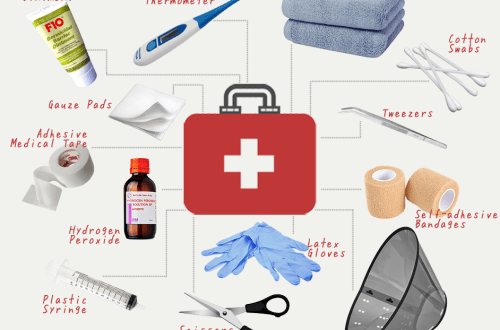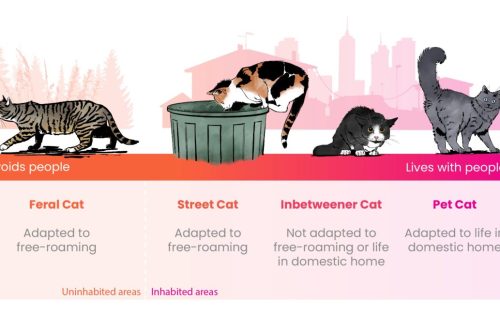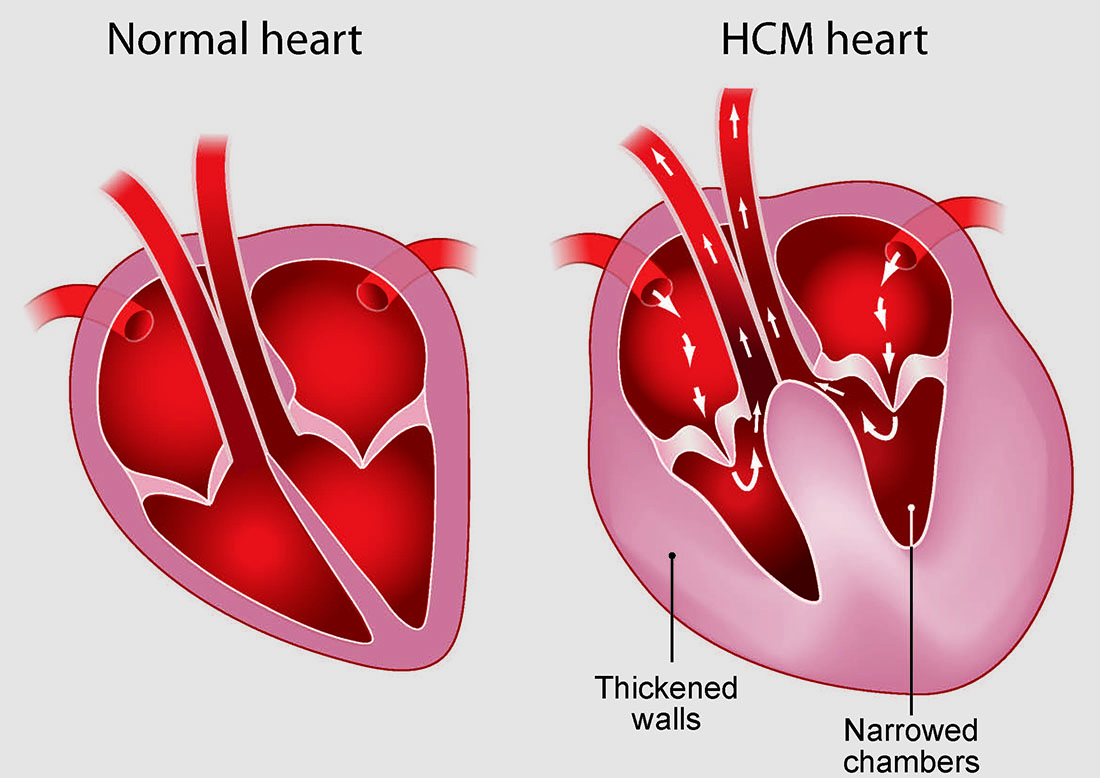
HCM in cats – hypertrophic cardiomyopathy
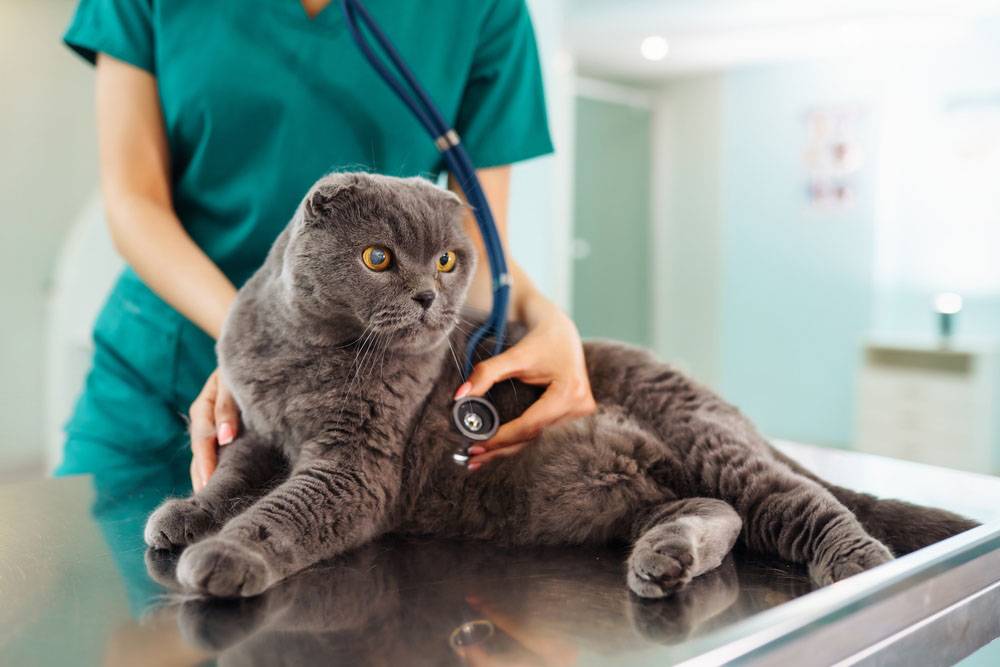
Contents
About Hypertrophic Cardiomyopathy
The heart consists of four chambers: left ventricle, left atrium, right ventricle, right atrium. The left ventricle has a powerful muscular frame, because it must pump blood from the heart into the body through the vessels. In hypertrophic cardiomyopathy, it is the left chambers of the heart that are affected – the left ventricle and the left atrium.
Hypertrophic cardiomyopathy is the most common heart disease in cats. It is characterized by thick walls of the left ventricle and, as a result, a decrease in its cavity.
Due to the decrease in the cavity, the pressure in the left chambers of the heart increases. Heart failure develops – the left chambers of the heart increase. As a result, the pressure in the vessels of the lungs increases and they develop
congestionAccumulation of fluid in the lungs – the liquid part of the blood, the pumping of which the heart can not cope with, goes into alveoliThe end part of the breathing apparatus in the form of a bubble lungs, filling them up. This condition is called cardiogenic pulmonary edema.
Symptoms of HCM usually develop in pets between the ages of 2 and 4, but may appear earlier.
There are differences in the course of the disease, taking into account the sex of the animal. HCM is more severe in cats.
This disease has several types, since the place of thickening of the wall can be in different places (the left ventricle has two walls – interventricular and posterior):
Symmetrical – the thickness of the two walls (posterior and interventricular) of the left ventricle exceeds the norm.
Asymmetric – thickening of one wall (posterior or interventricular) of the left ventricle.
Segmental – one section of one wall of the left ventricle is thickened.
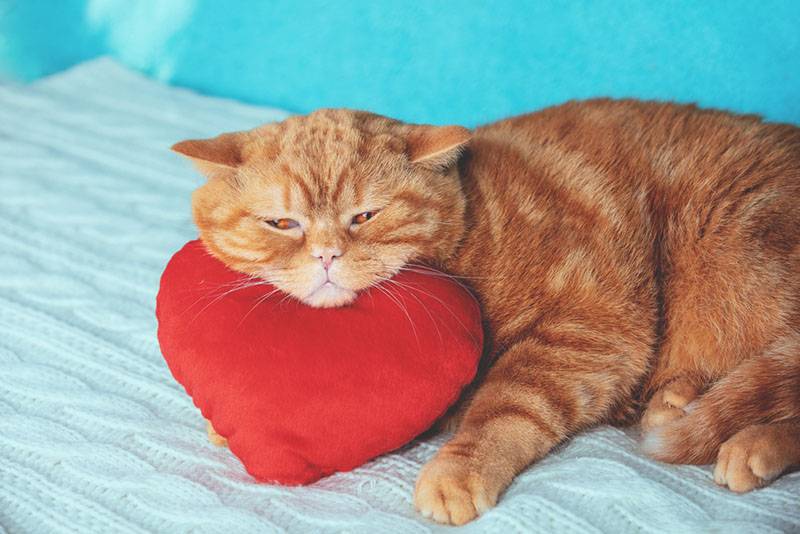
Since hypertrophic cardiomyopathy causes heart failure, it is also classified into stages depending on the severity of the symptoms:
Asymptomatic stage;
Stage with mild symptoms;
Stage with severe symptoms.
Causes of HCM
The main cause of HCM in cats is a hereditary pathology that is transmitted by genes. Sometimes the disease is called familial hypertrophic cardiomyopathy.
Thickening of the walls of the ventricle occurs due to the presence of a defect inside the cells
myocardiumMuscular tissue of the cardiac type, it is inherited. Excess connective tissue is formed. The ventricle becomes stiffer and ceases to relax normally.
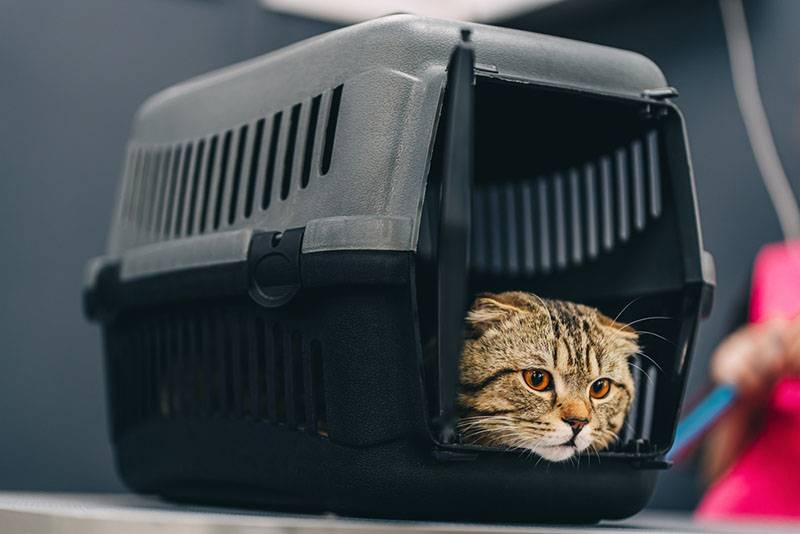
Breed Predisposition
Any breed can have this disease. However, some breeds of cats suffer from this heart disease more often.
Cat breeds such as Maine Coon, Ragdoll, American Shorthair, British Shorthair, Siberian, Turkish Van, Scottish Fold, Sphynx, Persian, Himalayan, Burmese hypertrophic cardiomyopathy is more common.
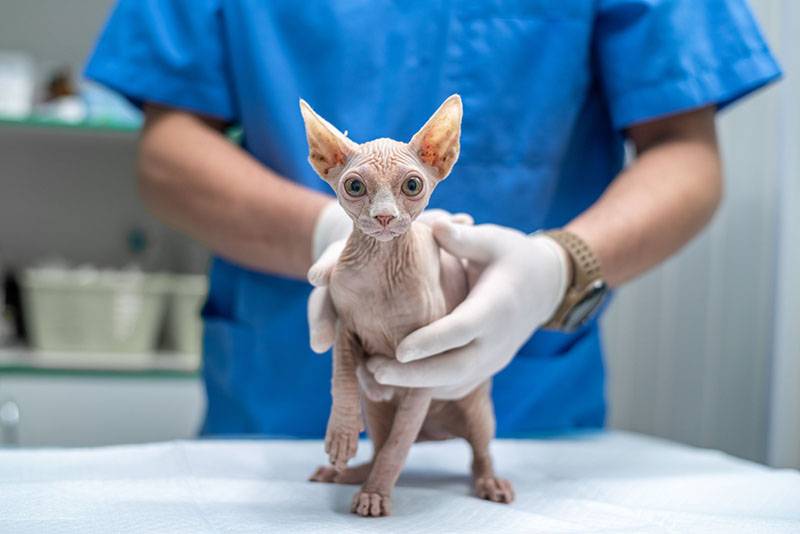
Symptoms of Hypertrophic Cardiomyopathy in Cats
The main symptom of heart disease in cats is shortness of breath during sleep.
It is very easy to identify it. It is enough to catch the moment when the animal is sleeping, turn on the stopwatch, look at the tummy and calculate the respiratory rate (RR). A healthy cat should make no more than 24 breaths per minute, subject to deep sleep. One breathing movement is one raising and lowering of the tummy.
Deep sleep is the most calm state of the animal, if you count at another moment, there is a high probability of making a mistake. Cats are quite excitable, active animals. Breathing in a calm state above 24 can be caused by their thoughts and emotions.
If you recorded more than 27 respiratory movements per minute in a dream, this is a reason to show the cat to a cardiologist in the near future and spend
echocardiography of the heartUltrasound of the heart.
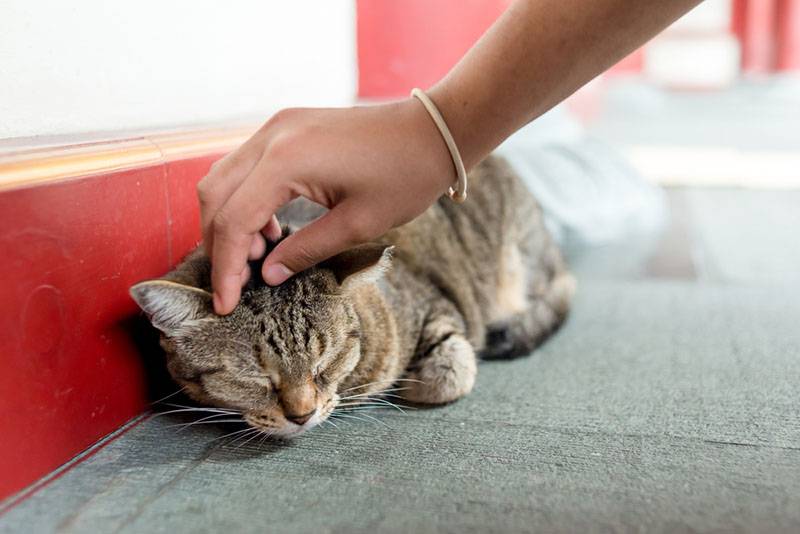
Other symptoms of HCM in cats include:
Hard breath
Lethargy
Apathy
Breathing with an open mouth
Intolerance to exercise during play
Loss of consciousness (fainting).
Diagnostics
Diagnosis of heart disease is carried out by a narrow specialist – a cardiologist. A complete cardiac examination includes examination, tonometry,
electrocardiographyMeasurement of heart rhythms, echocardiography.
Cardiac echocardiography is the leading method for diagnosing cardiomyopathy in cats. To make a diagnosis, it is necessary to measure the thickness of the walls of the left ventricle. If they are more than normal, the diagnosis is confirmed.
Electrocardiography plays no role in the diagnosis. But it is worth it if the doctor suspects a heart rhythm disorder. Or if the patient has episodes of weakness and fainting in symptoms.
Additional diagnostics may also be required depending on the stage and complications of the disease – x-rays, blood tests.
X-rays are needed to assess the condition of the lungs. In heart failure, fluid can accumulate not only in the alveoli of the lungs, but also in the chest cavity. This condition is called hydrothorax.
Blood tests are indicated to assess the condition of the internal organs, look for the presence of acute inflammation in the body and exclude other heart diseases that have a similar picture during ultrasound.
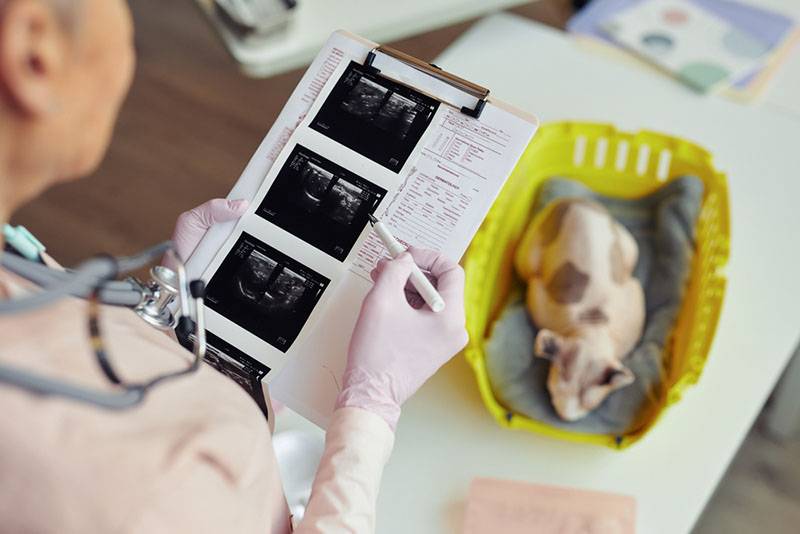
Treatment of HCM in cats
Treatment for cardiomyopathy in cats depends on the stage of heart failure.
In cats, there are 3 main stages depending on the symptoms of the patient:
1 stage – asymptomatic – there is a thickening of the walls of the left stomach, the chambers of the heart are not dilated, there is no heart failure.
2 stage – the symptoms are mild – there is a thickening of the walls of the left ventricle, an increase in the chambers of the heart, there is heart failure, there is no stagnation in the pulmonary circulation.
3 stage – the symptoms are strongly pronounced – there is a thickening of the walls of the left ventricle, heart chambers, heart failure and stagnation in the pulmonary circulation are present.
Usually, the tactics of treatment go in three directions: the fight against fluid stagnation in the pulmonary circulation – diuretics are prescribed (Furosemide, Torasemide, Veroshpiron), the prevention of blood clots – anticoagulants are prescribed (Clopidogrel, Xarelto), the fight against high blood pressure – are prescribed
ACE inhibitorGroup of natural and synthetic chemical compounds, calcium channel blockers (Vazotop, Amplodipine).

The course of cardiomyopathy in each cat is individual. Therapy may vary depending on complications and concomitant diseases. For example, if the cat has a heart rhythm disorder, the doctor prescribes drugs that lower the rhythm.
The most common complications are education
blood clotsblood clot, hydrothorax and ascitesFluid in the abdomen.
Blood clots form when the heart slows down blood flow due to an enlarged chamber. Unfortunately, it is possible to understand whether there are blood clots or not only if it is clearly visible on ultrasound or there are signs of their formation.
With hydrothorax, fluid does not accumulate in the alveoli of the lungs, but in the chest cavity. Cats that have hydrothorax breathe heavily because the fluid compresses the lungs and heart. If there is a lot of fluid, it is pumped out by a puncture of the chest under the control of an ultrasound machine.
Ascites appears with HCM in the later stages, when stagnation from the small circle passes into the systemic circulation. The fluid in this case accumulates in the abdominal cavity and compresses the internal organs. It is also pumped out by a puncture of the abdominal wall, if there is a lot of it.
It is important to understand that treatment affects the manifestation of symptoms, and not the thick heart wall. It is impossible to cure this disease. You can influence its course and manifestation of symptoms. The drugs are prescribed for life, and they require regular intake.
For many owners, this is a problem because cats do not like taking pills by mouth. In this case, you can come up with a trick – to hide the pill in a piece of hard butter.
Some drugs can be used by injection.
Prevention
The main prevention is to prevent stress in pets. If you understand that stress cannot be prevented (moving, New Year’s fireworks, repairs), then it is safer to drink a course of mild sedatives (Vetspokoin, Stop stress).
Stress is always best prevented and avoided as it releases the hormone cortisol. Due to cortisol, the heart begins to work faster and harder, which can trigger the onset of hereditary hypertrophic cardiomyopathy.
It is also worth periodically counting the NPV. This is not only an indicator of the presence of heart disease, but also a way to predict the development of cardiogenic pulmonary edema. Cardiogenic pulmonary edema is a life-threatening condition in which the lungs are filled with fluid and the animal can suffocate.
An increase in NPV is a prognosis for the development of cardiogenic pulmonary edema.
It is possible to have a cardiological examination with your pet once a year, in particular a heart echocardiogram, as a medical examination. But only if the trip to the clinic and the appointment with the doctor is not stressful for the animal. Otherwise, you can do more harm than good.
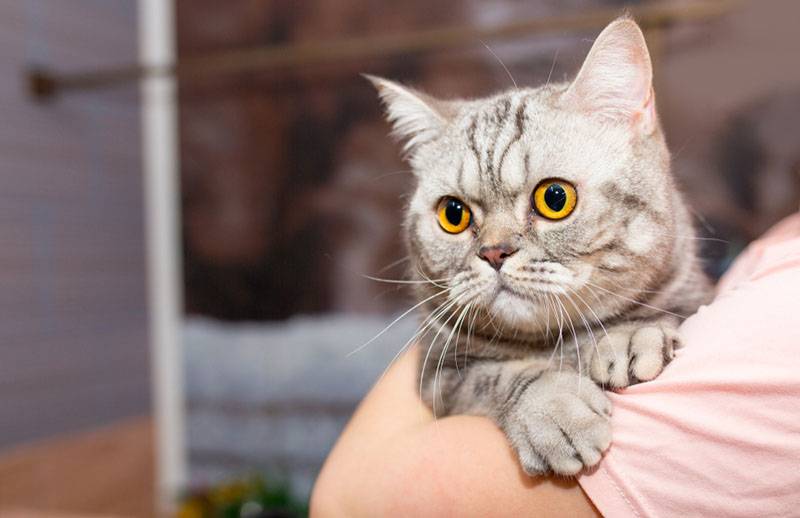
Prognosis – how long do cats with hypertrophic cardiomyopathy live?
In moderate and/or asymptomatic stages of HCM, the prognosis is good – pets can live for many years. Cats with severe HCM (the presence of congestion in the pulmonary circulation) live from 92 to 654 days.
It all depends on the course of the disease, response to treatment and related health problems.
Some may live for years, while others may live for several months.
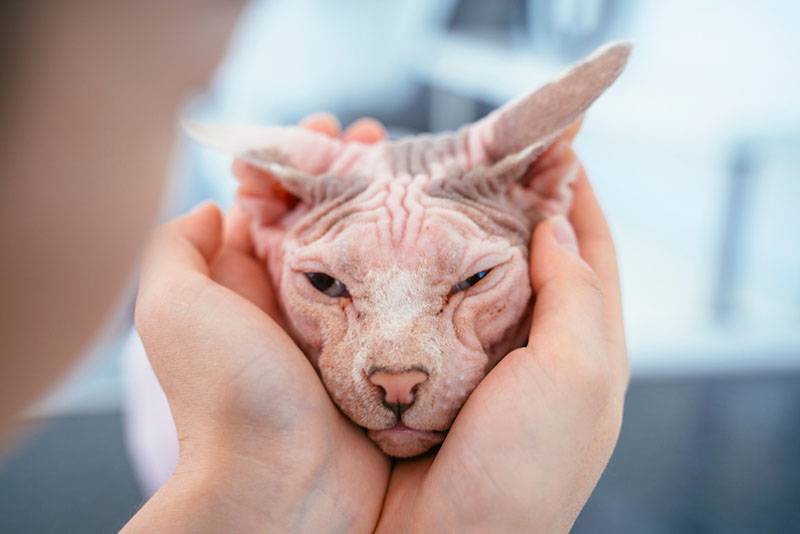
HCM in cats is the main thing
HCM is characterized by thickening of the walls of the left ventricle, resulting in heart failure.
HCM has a genetic predisposition. The disease is inherited.
The main symptom of HCM is shortness of breath at rest or during sleep.
The main diagnostic method is echocardiography of the heart.
Treatment depends on the stage of heart failure. Standard drugs are diuretics (Furosemide, Veroshpiron), anticoagulants (Xarelto, Clopidogrel), blood pressure lowering drugs (Vazotop, Amplodipine).
Prevention of the disease – the absence of stress and counting the respiratory rate in a dream (no more than 24 per minute).
The development of cardiogenic pulmonary edema can be controlled by respiratory rate.
The prognosis of life depends on the stage of heart failure. With a pronounced stage of HCM, pets live from 92 to 654 days.
Sources:
Etienne Côté, Kristin A. MacDonald, Kathryn M. Meurs, Meg M. Sleeper “Cardiology of cats” (translation and scientific edition by A. V. Kamenev, P. A. Kuznetsov), SCIENTIFIC LIBRARY Publishing House, 2018, 578 pages
1 September 2022
Updated: September 2, 2022



